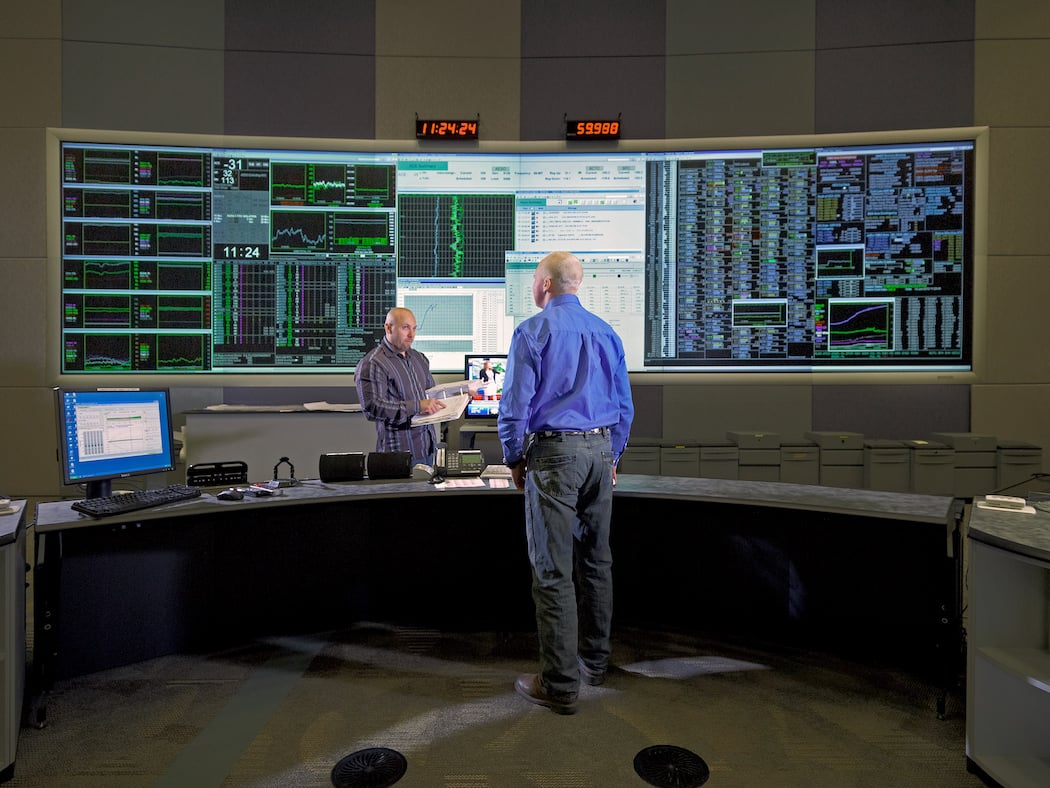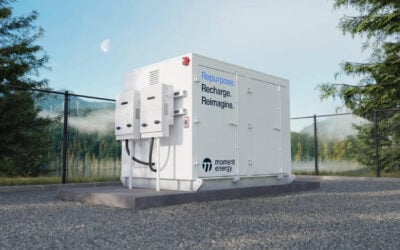
The grid operator for the Canadian province of Alberta’s forthcoming technology pilot for fast frequency response services is a “step in the right direction” to enable energy storage deployment, but current regulatory conditions present barriers to maximising the value of batteries and other storage, Energy-Storage.news has heard.
Alberta Electric System Operator (AESO) announced plans for the pilot on 14 October, when it published a report on wider energy storage and distributed energy resource issues for stakeholders. This included an update on the AESO Energy Storage Roadmap, which the non-profit entity said “sets out a plan to facilitate the integration of energy storage in Alberta”.
Enjoy 12 months of exclusive analysis
- Regular insight and analysis of the industry’s biggest developments
- In-depth interviews with the industry’s leading figures
- Annual digital subscription to the PV Tech Power journal
- Discounts on Solar Media’s portfolio of events, in-person and virtual
As reported by Energy-Storage.news, recent developments in the province include the successful implementation of the first transmission grid-connected energy storage project. AESO said that 10 further projects are on its connection list, two of which are expected to be completed and put into service this year.
Meanwhile, the fast frequency response pilot is expected to be implemented in late 2021 and will run for 12 to 18 months. The ancillary service boosts transmission system reliability and in this case will help AESO to maintain grid frequency when there is the sudden loss of electricity imports from interties with British Columbia and Montana.
Under AESO's definition of fast frequency response (FFR) providers of the service must respond within 0.2 seconds (or 12 cycles) when the grid system’s frequency hits 59.5Hz to bring it back up to 60Hz. AESO said it is planning the pilot to be targeted at “any new technology that is capable of meeting the FFR technical requirements”.
The operator will hold an open procurement process and target between 20MW and 40MW of FFR capability from one to three service providers. Meanwhile successful projects will be able to participate in energy and operating reserve markets in addition to providing the FFR ancillary service.
Specialist law firm OSLER highlighted in a blog post about the procurement that the announcement “presents a unique opportunity for energy storage assets in the province” and is a “welcome boost” to energy storage proponents and related technology providers that so far have faced hurdles to deploy storage in Alberta, with information gathered from the pilot likely to inform the long-term design of how AESO procures FFR and “could ultimately lead to further opportunities” for FFR service providers.
This is perhaps similar to the 2015 launch of a 200MW enhanced frequency response (EFR) tender in the UK, which is widely considered to have kickstarted the market for energy storage, particularly fast-responding battery assets, to provide grid services in that country.
System operator has opened consultation to address other ‘significant hurdles’
Justin Rangooni, executive director of trade association Energy Storage Canada, told Energy-Storage.news that his group “welcomes this announcement as it provides an opportunity for energy storage resources in the province”. As regular readers of this site will know, much of the activity in advanced energy storage in Canada so far has been concentrated in the neighbouring province of Ontario.
While there have been some movements to embrace energy storage such as the approval by the Alberta Public Utilties Commission of a solar-plus-storage project including 8MW / 8MWh of batteries due to its development being in the public interest, Alberta is still far behind Ontario's energy storage market, which has been largely driven by that province's Global Adjustment Charge policy for lowering industrial peak electricity demand.
“FFR is a fast-acting transmission reliability service that ensures a sufficient amount of energy is injected to the grid to ensure stability, which energy storage resources can provide,” Rangooni said.
“Energy Storage Canada believes this is a step in the right direction and commends the AESO for this announcement along with its work in developing a Roadmap for the integration of energy storage into Alberta’s electricity grid in the interim and long term.”
However, the Energy Storage Canada executive director said, the “tariff treatment of energy storage resources,” through which AESO determines the cost of connecting to the Alberta electricity grid still presents “hurdles to fully unlock the potential of energy storage in the province”.
The current AESO tariff is a “significant barrier” to realising the full economic potential of energy storage, Rangooni said. As is the case in other jurisdictions including Germany, energy storage, being “neither pure load or pure generation” currently sits outside existing regulatory definitions for resources connecting to the grid, the executive director pointed out.
AESO has put energy storage within the scope of an engagement on Bulk & Regional Rate Redesign, which means stakeholders will have the opportunity to put their case forward for revising these rules and the tariff, and Energy Storage Canada is an active participant in that consultation process, according to Justin Rangooni. The association will be “bringing forward options” for that consideration of grid-connected energy storage assets as neither pure load nor pure generation, the executive director said.
On a related note, Energy Storage Canada recently applauded the Canadian government of Prime Minister Justin Trudeau to specifically recognise the importance of energy storage in a CA$10 billion (US$7.53 billion) infrastructure investment plan in part aimed at reinvigorating the economy after the year’s coronavirus pandemic.
“Energy Storage Canada believes that fully unlocking the potential of energy storage across the county can help in economic recovery efforts and assist in Canada’s energy transition as it provide multiple services that benefits ratepayers and the electricity grid, from optimising existing clean generation assets, to deferring investments on the transmission and distribution grids,” Justin Rangooni told Energy-Storage.news this week.
Rangooni also referred back to a report which focused on the benefits of energy storage for Ontario, put out by the association earlier this year that outlined the “many potential value streams” and which said that even before the environmental and societal benefits of the strategic and widespread deployment of energy storage are counted, the installation of 1GW of energy storage could reap up to CA$4 million in direct economic benefit for the Canadian province over 10 years.






